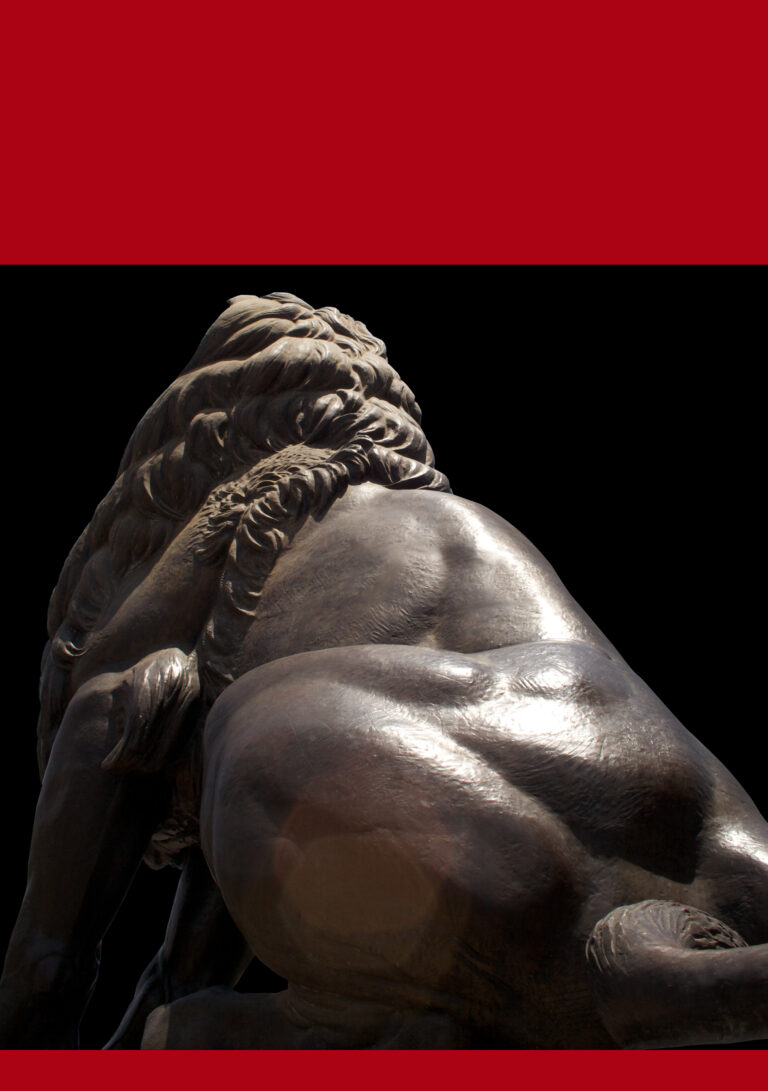Iman Issa
Photograph—(Un)Like (M)Any Other(s)
Opening – 26 APR 2024, 6-9 pm

II_2010_Untitled_Poster_#6_WID25429_tif
Iman Issa, Colors, Lines, Numbers, Symbols, Shapes, and Images—Or So You May Think, 2024
Inkjet print
68,5 x 48 cm
Courtesy of the artist and carlier | gebauer, Berlin/Madrid
© Iman Issa
Sometimes you come across (an image of) a statue, a monument, a building, an event, barely looking at it and hardly noticing it. Even when you do notice it, it feels inconsequential; a benign sign of a time gone by, regardless of how violent that time was, or is perceived to have been. But there are other times when you cross an image of the same statue, monument, or building realizing that looking at it has become unbearable—That it is clearly malicious and destructive to your being. You take account of it now as an active agent in a recurrent violence which, you also now clearly understand, has never ceased.
What a photograph features and what can be deciphered from it are arguably two different things, most likely related to a time and place. A photograph can be mute until it acquires a title, a date, a location, or a footnote, after which it may remain mute or contrarily start outright screaming. A few years later, one may encounter the same photograph, with the same added title, the same added date, the same added location, and the same added footnote, realizing that it has lost its scream or has acquired one it lacked before. But this is all (im)possible for one to ascertain or claim about a different time and place, for we are here and we are now.

II_2018_Replica for Illustration_WID25423
Iman Issa, (Art) Objects—And More, 2024
From the series Replica for Illustration
C-print
61,5 x 92 cm
Courtesy of the artist and carlier | gebauer, Berlin/Madrid
© Iman Issa
With all that has been written about images and the inadequacy of the representational model and with everything that is now known about the invention and history of photography and the departure of digital technology from the imprinting or preservation of a so called physical reality into the generation of one, one can embrace a different story about image documentation, not the one that laments their abstracting potential or accuses them of the manipulation or degradation of reality but the one that accepts them as a reality in their own right. (…)They can be imagined as parallel entities to the world they reference, the world by which they are also referenced. And like other parallel entities, they can be the means to access aspects of that world that may otherwise remain hidden. In 1986 Serge Daney claimed that “Nothing happens any longer to humans, it is to the image that everything happens.” But it may very well be that everything still happens to human beings but the image is now one of the few places where what happens can be registered.
Iman Issa

II_2018_Replica_for_Illustration_WID25419_
Iman Issa, (Art) Objects—And More, 2024
From the series Replica for Illustration
C-print
61,5 x 92 cm
Courtesy of the artist and carlier | gebauer, Berlin/Madrid
© Iman Issa
In her second exhibition at carlier | gebauer, Berlin, Iman Issa is showing a collection of works revolving around photography in many of its facets. Doubles: Photograph—(Un)Like (M)Any Other(s), 2024 is composed of displays revolving around a collection of two photographs from different time periods and geographies, but which share the same title. Animal Masks for Tribunal Scene, 2022, from the series Surrogates, is a display of three-dimensional elements extracted from a film sequence, which is itself described in an accompanying text panel. Self-Portrait (Self as Hannah Arendt), 2021, and Self-Portrait (Self as Georges Henein), 2021 are two displays from Proxies, with a Life of Their Own, which is a series of self-portraits, which are simultaneously portraits of other people accompanied by qualifying statements. Book of Facts: A Proposition, 2017 is a catalogue of an exhibition that never took place and never will, and where the documentation of the works from the exhibition is communicated via diagrams accompanied by descriptive captions. Doubles: See No Evil, Hear No Evil (Germany / Egypt), 2024, Portrait (Not for Sale), 2024, which is in fact for sale, Hier Spricht Der Feind (For Sale), 2024, which is in fact not for sale, Car Wash—Or So It Seems, 2024, Colors, Lines, Numbers, Symbols, Shapes, and Images—Or So You May Think, 2024, (Art) Objects—And More, 2024, all deal with a kind photography that records places, times, peoples, and things that may appear generic; may appear like their referents could be related to any place, any time, any peoples or anythings but which are in fact related to very specific places, very specific times, very specific peoples and things¹.
The artist would like to thank: Amy Binding, Marie-Blanche Carlier, Arne Clemens,
Alexandra Dominic, Ulrich Gebauer, Katy Green, Holger Hönck, Shahira Issa, Ihsan Kenawi, Sylvia Kouvali, Nicolas Linnert, Marcella Lista, Adrian Lohmüller, Andrew Parry,
Sandra Stemmer, Clara Stratmann, Nina Tabassomi, Jill Winder.
Iman Issa (b. 1979, Cairo) lives and works in Berlin. She is a recipient of the 2017 Vilcek Prize, the 2015 Louis Comfort Tiffany Foundation Award, the 2013 Abraaj Group Art Prize and HNF-MACBA Award in 2012 and was nominated for the Preis der Nationalgalerie 2017 among others. Recent group and solo exhibitions include DAAD, Berlin; Kunstmuseum, St. Gallen; Whitney Biennial, New York; Bielefelder Kunstverein, Bielefeld; Hamburger Bahnhof, Berlin, Kunsthalle Lissabon, Spike Island, Bristol; Lisbon; MACBA, Barcelona; Perez Museum, Miami; the 12th Sharjah Biennial; the 8th Berlin Biennial; MuHKA, Antwerp; New Museum, New York; and KW Institute of Contemporary Art, Berlin. Her work is held in the collections of the Museum of Modern Art, New York; MACBA, Barcelona; Guggenheim Museum, New York; and Magasin III, Stockholm among others.
